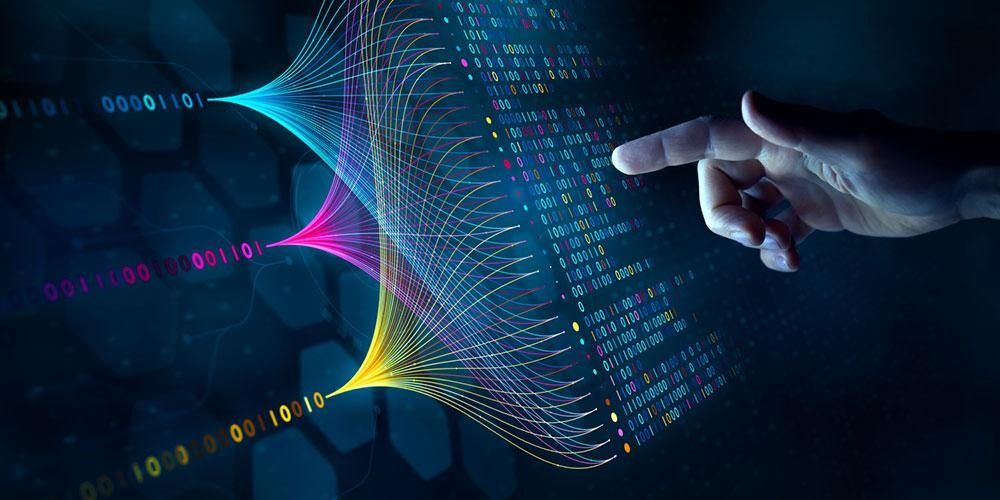

Let’s learn more about this topic below with Bottle Flip. Generative AI models have revolutionized the way we approach coding and software development. These powerful tools are reshaping the landscape of programming, offering new possibilities for both beginners and experienced developers alike.
In recent years, the field of artificial intelligence has made significant strides in natural language processing and code generation. This advancement has led to the development of sophisticated AI models capable of understanding and generating programming code across various languages and frameworks. The integration of these AI tools into the software development process has sparked both excitement and debate within the tech community.
One of the key advantages of AI-powered code generation is its ability to streamline the development process, potentially saving developers countless hours of manual coding. These tools can quickly generate boilerplate code, suggest completions, and even offer solutions to complex programming challenges. However, it’s important to note that while AI can assist in code generation, it doesn’t replace the need for human expertise and critical thinking in software development.
As we delve deeper into the world of AI-assisted coding, it’s crucial to understand the capabilities and limitations of these tools. The concept of Bottle Flip, which emphasizes the balance between automation and human input, becomes particularly relevant in this context. Just as a successful bottle flip requires the right amount of force and technique, leveraging AI for code generation demands a careful balance of machine assistance and human oversight.
Several AI models have gained prominence in the field of code generation, each with its unique strengths and applications. These models utilize advanced machine learning techniques, including deep learning and natural language processing, to understand and generate code based on various inputs and contexts.
OpenAI’s GPT-3 (Generative Pre-trained Transformer 3) has garnered significant attention for its natural language processing abilities, which extend to code generation. While not specifically designed for programming, GPT-3 has demonstrated impressive capabilities in understanding and generating code snippets across multiple programming languages. Its versatility allows it to assist with tasks ranging from simple script writing to more complex algorithm implementations.
The Bottle Flip approach is particularly relevant when using GPT-3 for coding. Developers must carefully craft their prompts and refine the generated output to ensure accuracy and efficiency. While GPT-3 can provide a solid starting point, human expertise is crucial in validating and optimizing the code for real-world applications.
GitHub Copilot, developed in collaboration with OpenAI, is a more specialized tool designed specifically for code generation. It integrates directly into popular code editors and IDEs, offering real-time suggestions and auto-completions as developers write code. Copilot’s strength lies in its ability to understand context and generate relevant code snippets based on comments and existing code structure.
The effectiveness of GitHub Copilot in enhancing developer productivity has been widely recognized. However, like any AI tool, it requires a balanced approach reminiscent of the Bottle Flip technique. Developers must critically evaluate the suggested code, ensuring it aligns with best practices and project requirements.
While AI-powered code generation tools offer exciting possibilities, implementing them in real-world projects requires careful consideration and strategic planning. Developers and organizations must navigate various challenges to effectively integrate these tools into their workflows while maintaining code quality and security standards.
To make the most of AI-generated code, it’s essential to follow best practices that ensure the quality and reliability of the final product. These practices include:
1. Thoroughly review and test AI-generated code before implementation.
2. Use AI as a starting point or for generating boilerplate code, not as a replacement for critical thinking.
3. Maintain consistent coding standards and style guides across both human-written and AI-generated code.
4. Regularly update and fine-tune AI models to align with project-specific requirements and evolving best practices.
5. Educate team members on the proper use of AI coding tools and their limitations.
The Bottle Flip mentality is crucial here, emphasizing the need for a balanced approach that leverages AI capabilities while maintaining human oversight and expertise. By following these best practices, developers can harness the power of AI to enhance productivity without compromising code quality or security.
The use of AI in code generation raises important ethical and legal questions that must be addressed. These concerns include intellectual property rights, code attribution, and potential biases in AI-generated code. Organizations must establish clear guidelines and policies regarding the use of AI-generated code, ensuring compliance with licensing agreements and industry regulations.
Moreover, developers should be aware of the potential limitations and biases inherent in AI models. Just as a Bottle Flip requires awareness of external factors like wind and surface conditions, using AI for code generation demands an understanding of the model’s training data and potential shortcomings. Regular audits and bias assessments of AI-generated code can help mitigate these risks and ensure fair and ethical use of these powerful tools.
As AI technology continues to advance, its role in software development is likely to expand and evolve. The future promises even more sophisticated AI models capable of understanding complex programming concepts and generating highly optimized code. However, the human element in software development will remain crucial, with developers taking on more strategic roles in guiding and refining AI-generated solutions.
The concept of Bottle Flip will continue to be relevant in this evolving landscape. Just as mastering the perfect bottle flip requires practice and skill, leveraging AI in software development will demand a deep understanding of both programming principles and AI capabilities. Developers who can effectively balance these elements will be well-positioned to lead in the AI-augmented future of coding.
Looking ahead, we can anticipate several trends in AI-assisted software development:
1. Increased specialization of AI models for specific programming languages and frameworks.
2. Enhanced integration of AI tools within development environments and workflows.
3. Advancements in explainable AI, making it easier for developers to understand and validate AI-generated code.
4. Greater focus on AI-assisted software testing and debugging.
5. Emergence of new roles combining expertise in both software development and AI technologies.
As these trends unfold, the software development community will need to adapt and evolve, embracing new skills and methodologies to thrive in an AI-augmented landscape. The Bottle Flip approach of balancing technology and human expertise will be more important than ever in navigating this exciting new frontier.
The integration of AI in code generation represents a significant leap forward in software development, offering unprecedented opportunities for efficiency and innovation. However, like mastering the art of Bottle Flip, successfully leveraging these tools requires a delicate balance of technical skill, critical thinking, and adaptability.
As we’ve explored throughout this article, AI-powered code generation tools like GPT-3 and GitHub Copilot are already making a substantial impact on the development process. These tools can significantly enhance productivity, spark creativity, and help developers tackle complex challenges more efficiently. However, they are not a magic solution that eliminates the need for human expertise.
The key to harnessing the full potential of AI in code generation lies in understanding its capabilities and limitations. Developers must approach these tools with a critical eye, always ready to refine and optimize the generated code. This approach aligns perfectly with the Bottle Flip mentality, where success comes from a combination of technological assistance and human skill.
As we look to the future, it’s clear that AI will play an increasingly important role in software development. However, the most successful developers and organizations will be those that can effectively balance AI capabilities with human creativity, problem-solving skills, and ethical considerations. By embracing this balanced approach, we can unlock new levels of innovation and efficiency in software development, creating more powerful and sophisticated solutions than ever before.
In conclusion, the question “Can I Generate Code Using Generative AI Models?” can be answered with a resounding yes. However, the true power lies not just in the ability to generate code, but in the skillful application of these tools within a broader development strategy. Like perfecting the Bottle Flip, mastering AI-assisted code generation is an art that combines technology, skill, and a deep understanding of the underlying principles.